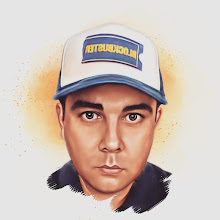 "Creature From The Black Lagoon" ** 1\2 (out of ****)
"Creature From The Black Lagoon" ** 1\2 (out of ****)"Creature From The Black Lagoon" (1954) was a science-fiction/horror film made at Universal Studios. At one time Universal Studios was known as a successful studio which produced some of the most memorable horror films of all time. It was at this studio "Dracula" (1931), "Frankenstein" (1931), "The Mummy" (1932) and "The Wolf Man" (1941) was made.
Those movies were quite ambitious. "Dracula" and "Frankenstein" borrowed a visual style from German Expressionism and the work of Fritz Lang and F.W. Murneau. "The Wolf Man" borrowed from noir films, which were quite popular at the time. But with "Creature From The Black Lagoon" Universal Studios seems to have lost its ambition. "Creature From The Black Lagoon" seems to be borrowing from Ed Wood. This is an almost campy "B" film. Their is great potential here but the film's execution is slightly off.
It is largely believed "Creature From The Black Lagoon" signaled the end of Universal's monster reign. "The Gill Man", as he is known, was the last successful horror film character the studio created.
The film takes place along the Amazon river. A marine biologist, Carl Maia (Antonio Moreno) finds the hand of what appears to be a prehistoric creature among some rocks. He takes the hand to some fellow colleagues; Dr. David Reed (Richard Carlson), Kay Lawrence (Julie Adams) and Dr. Mark Williams (Richard Denning) all of whom are intrigue by the hand and what he may represent for their studies. Dr. Williams is also interested in the fame and financial rewards such scientific find may bring. So, they all agree to head at to the site where the hand was found and explore.
"Creature From The Black Lagoon" is a relatively short film but it makes a lot of mistakes. The biggest mistake is the way the villain, The Gill Man, is treated. I feel the character is seen too soon into the picture, roughly 24 minutes into the movie. This takes away a lot of suspense which could have been created as an audience prepares itself for what this creature may look like. But Universal Studios went all out pushing the character out on the public through its advertising. The creature was the main selling point to the studio and they were going to exploit the look of the monster at all cost in their attempt to generate excitement over the movie.
What also hurts "Creature From The Black Lagoon" is the "B" quality of the film. The acting is under-par. The performers are rather stiff, the dialogue somewhat clumsy. The film lacks suspense not just because of the way the creature is presented but because we are never fully engaged in the story. We don't come to fear for these characters.
I wasn't born in 1950s America. In fact I wasn't in the 1950s but, I suspect, from what I know about other films from the period, "Creature From The Black Lagoon" is a good representation of the times. The 1950s saw a time of great interest in science-fiction. Particularly "B" pictures. Think of Ed Wood titles such as "Night of the Ghouls" (1959), "Plan 9 From Outer Space" (1959) and Roger Corman's "The Beast With A Million Eyes" (1955).
The movie also has an interesting message. Yes readers, a movie called "Creature From The Black Lagoon" has a message. The way I interpret it "Creature From The Black Lagoon" tells us, mind your own damn business. The 1950s, as I said, were a time of great interest in exploration. Going into outer space and alien invasions, discovering the world around us. In "Creature From The Black Lagoon" the characters feel by understanding the past we can understand the future but, like it says in the bible, "seek and ye shall find". And that is the point of the movie. If you go looking for something, you just might find it, and that may not be a good thing. Better to leave nature alone. Better to mind your own business and let things remain as they are. Trouble may be on the horizon.
Some also say the film has that old "King Kong" (1933) element going for it. That of a beast falling in love with a beautiful woman. The Gill Man (played on land by Ben Chapman and in water by Ricou Browning) actually falls in love with Kay. That is why he begins to attack the group so he can get his hands on Kay. This is of course an old theme in movies and literature. Presenting the beautiful woman as an object of affection for a deformed being whether it is in "The Hunchback of Notre Dame", "Beauty & The Beast" or "King Kong". Look at what Peter Jackson did in his 2005 remake. He made the woman (played by Naomi Watts) actually feel for Kong.
"Creature From The Black Lagoon" could actually benefit from a remake (God, I can't believe I just said that). It has been something which has been rumored from time to time in Hollywood but the project keeps falling through. But a good movie is lurking here if someone would give it another shot. Put in a little more money, better acting and better dialogue. Also, take that old "Jaws" (1974) approach of delaying the on-screen appearance of the creature.
Will "Creature From The Black Lagoon" work on today's younger audience? I doubt it. Should you watch it anyway? Sure, why not. "Creature From The Black Lagoon" has some qualities worth recommending and it has clearly left an influence on horror films and inspired many films. Just don't expect a masterpiece something on par with Universal Studios earlier horror films.















